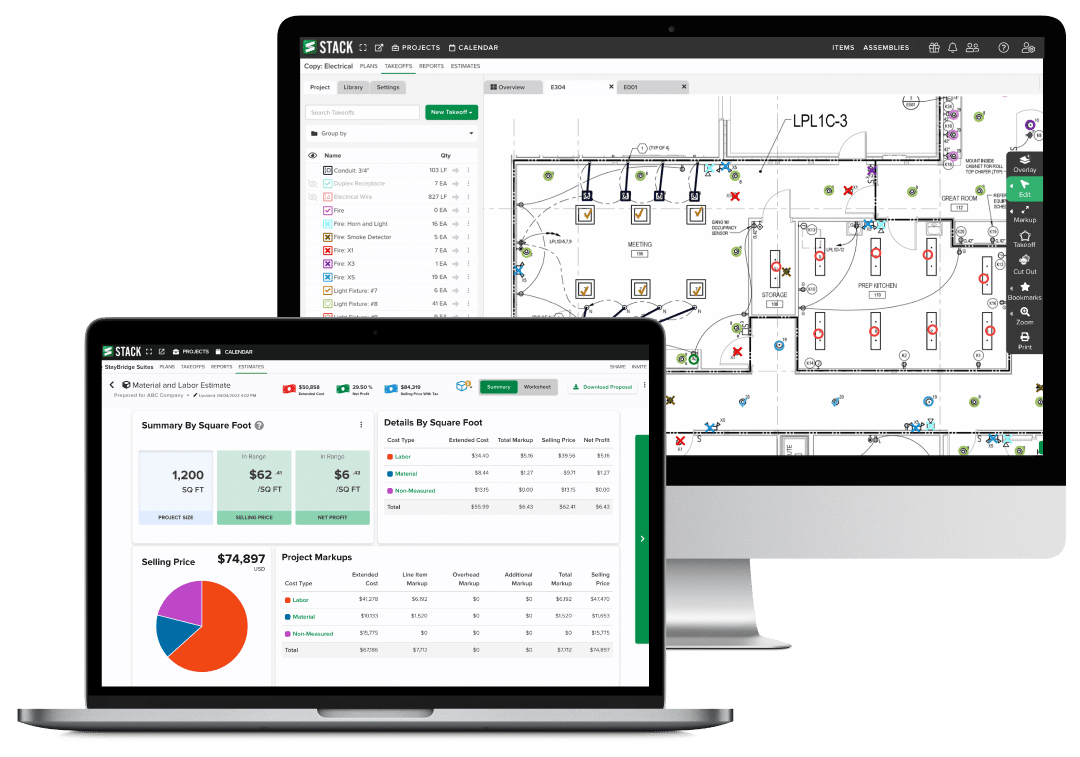A Comprehensive Overview to Electric Estimating Techniques for Building And Construction Specialists
In the world of building and construction tasks, accurate electrical estimating is a keystone for success. The capacity to forecast costs properly can make a significant difference in the result of a task, both in regards to budget adherence and earnings. As building and construction professionals browse the ins and outs of electrical estimating, they run into obstacles that require a blend of market understanding, logical skills, and tactical thinking. By discovering the nuances of approximating strategies tailored specifically to electric projects, professionals can enhance their ability to bid competitively and secure effective end results.
Recognizing Electrical Project Range

Trick aspects of comprehending the project range consist of evaluating the architectural and design illustrations, specs, and any type of other pertinent documents. This analysis helps in identifying the specific location of electric elements, load demands, voltage requirements, and compliance with building ordinance and laws - CE Estimating Melbourne. Understanding the project range makes it possible for building and construction experts to expect prospective challenges or disparities that may develop during the installment process and develop backup strategies to address them effectively.
Fundamentally, a clear understanding of the electrical job scope functions as the foundation for exact cost estimate, resource allocation, organizing, and total task management, ultimately leading to the successful conclusion of electric installations within budget and timeline restraints.

Studying Material Prices
Effective task administration in electrical setups requires a precise analysis of material prices to make sure optimum source application and spending plan adherence. Evaluating product expenses involves a thorough examination of the expenditures associated with the electrical components needed for a job.
In addition, conducting a complete evaluation of product expenses allows job supervisors to determine possible cost-saving chances. By comparing prices from various suppliers and checking out alternative materials or sources, building experts can optimize their procurement strategies and minimize expenditures. In addition, examining product expenses assists in developing a practical budget and staying clear of unexpected financial problems during the project execution phase. Generally, a detailed understanding of product expenses is important for effective project preparation and implementation in the electric building industry.
Estimating Labor Costs
To precisely forecast costs in electrical construction jobs, estimating labor costs is an essential element that calls for precise interest and cautious consideration (Concept Electrical Estimating). When approximating labor costs, it is necessary to take anonymous into consideration factors such as the number of electricians required, their skill degree, the period of the project, and any kind of prospective overtime expenses.
Working together with task managers and electrical contractors throughout the estimation process can aid verify labor estimates and make certain a detailed understanding of the project's labor demands. By precisely approximating labor expenses, building experts can enhance cost management and project productivity.
Utilizing Approximating Software Tools
Utilizing specialized approximating software program tools can substantially improve the procedure of determining labor costs in electric building projects. These devices use different attributes that boost accuracy and performance in estimating. One best site vital advantage of making use of approximating software application is the capability to create detailed and personalized estimates swiftly. By inputting project-specific information such as labor rates, material prices, and task timelines, these tools can create specific quotes in a fraction of the moment it would certainly take to do manually.
In addition, estimating software application can aid track modifications and updates in real-time, making sure that quotes mirror one of the most existing details. This can be particularly valuable in dynamic construction atmospheres where job information may transform frequently. In addition, lots of estimating software tools provide integration with various other project administration software program, enabling smooth coordination between organizing, budgeting, and estimating processes.
Applying Risk and Backup Aspects
Incorporating danger and contingency aspects is crucial in electric estimating for building projects to account for unforeseen circumstances and make sure monetary readiness. Dangers in electrical estimating can develop from various resources such as worldly cost fluctuations, labor scarcities, style changes, or unanticipated site problems. To effectively take care of these threats, building experts should carry out i loved this a detailed threat evaluation at the start of the estimating process. This assessment involves recognizing potential threats, assessing their potential effect on the project, and establishing mitigation approaches to resolve them.
Contingency elements, on the various other hand, are additional funds set apart to cover unforeseen prices that might develop during the project's execution. These prices can include adjustments in task scope, delays, or unforeseen expenses. It is recommended to allot a reasonable portion of the task expense as a contingency to ensure financial stability throughout the task. By integrating risk and backup aspects into the estimating process, building and construction professionals can improve the accuracy of their estimates, lessen economic surprises, and enhance overall project monitoring.
Conclusion
Finally, mastering electrical estimating methods is crucial for building professionals to properly budget plan and prepare for tasks. By understanding project extent, evaluating material prices, estimating labor expenditures, using software application devices, and applying threat and contingency variables, professionals can guarantee the success of their projects. It is essential to continuously improve approximating skills and stay updated on industry fads to remain affordable in the building and construction market.
To properly predict costs in electric building projects, approximating labor costs is an essential aspect that needs meticulous attention and cautious factor to consider. Working together with job managers and electrical experts during the evaluation process can aid confirm labor estimates and guarantee a comprehensive understanding of the task's labor requirements.Utilizing specialized approximating software devices can substantially simplify the process of calculating labor expenses in electric building tasks. It is advised to designate a reasonable percentage of the job price as a backup to guarantee financial security throughout the task. By recognizing job range, evaluating material expenses, approximating labor costs, utilizing software tools, and implementing risk and backup factors, professionals can ensure the success of their jobs.
 Ben Savage Then & Now!
Ben Savage Then & Now! Ross Bagley Then & Now!
Ross Bagley Then & Now! Mackenzie Rosman Then & Now!
Mackenzie Rosman Then & Now! Matilda Ledger Then & Now!
Matilda Ledger Then & Now! Brooke Shields Then & Now!
Brooke Shields Then & Now!